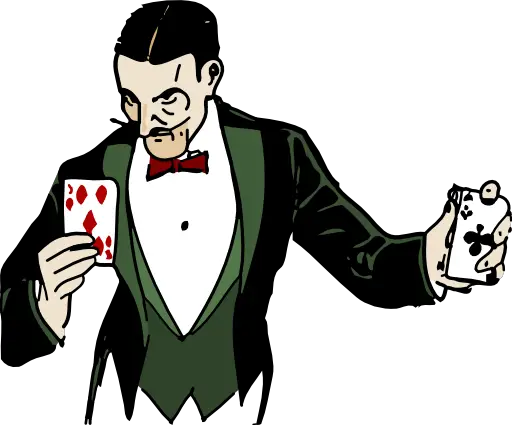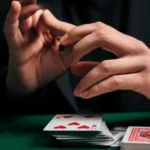Support our educational content for free when you purchase through links on our site. Learn more
What Tricks Do Mind Readers Use? 8 Secrets Revealed 🧠 (2025)
Imagine sitting in a crowded theater, watching a performer seemingly pluck your deepest thoughts from thin air. How do they do it? Is it magic? Psychic powers? Or something far more fascinating—and accessible? In this article, we pull back the curtain on 8 mind-blowing tricks mind readers use to create the illusion of reading your mind. From psychological forces like the infamous “Gray Elephant in Denmark” to subtle body language decoding, you’ll discover the real science and art behind these astonishing feats.
Whether you’re a curious spectator or an aspiring mentalist, we’ll guide you through the history, techniques, and ethical considerations of mind reading. Plus, we’ll share insider tips on how you can start practicing these skills yourself—no crystal ball required! Ready to unlock the secrets behind the illusion? Let’s dive in.
Key Takeaways
- Mind reading is a clever blend of psychology, misdirection, and showmanship—not supernatural powers.
- The top 8 tricks include cold reading, hot reading, psychological forces, muscle reading, suggestion, linguistic patterns, misdirection, and technology.
- Techniques like forcing and priming subtly influence choices without the participant realizing it.
- Body language and micro-expressions provide invaluable clues to mentalists.
- Ethical mentalism focuses on entertaining with integrity, avoiding exploitation.
- Anyone can learn these skills with practice and quality resources like Ellusionist’s Mind Reading Starter Kit or Vanishing Inc.’s Mentalism Collection.
👉 CHECK PRICE on:
- Ellusionist Mind Reading Kits on Amazon | Ellusionist Official Website
- Vanishing Inc. Mentalism Collection on Amazon | Vanishing Inc. Official Website
Table of Contents
- ⚡️ Quick Tips and Facts About Mind Reading Tricks
- 🧠 The Fascinating History and Psychology Behind Mind Reading
- 1. Cold Reading: The Art of Guessing Without Guesswork
- 2. Hot Reading: Using Pre-Show Research to Amaze
- 3. Psychological Forces: Subtle Influence Techniques Explained
- 4. Muscle Reading and Body Language: Decoding the Silent Signals
- 5. The Power of Suggestion: How Mind Readers Plant Ideas
- 6. Linguistic Tricks: Using Language Patterns to Predict Thoughts
- 7. The Role of Misdirection in Mind Reading Performances
- 8. Technology and Mind Reading: Gadgets Behind the Curtain
- How to Learn Mind Reading Tricks: Tips and Resources for Beginners
- Famous Mind Readers and Their Signature Techniques
- Ethics and Skepticism: Understanding the Limits of Mind Reading
- Mind Reading in Popular Culture: Movies, Books, and TV Shows
- Conclusion: Unlocking the Secrets Behind the Illusion
- Recommended Links for Mind Reading Enthusiasts
- FAQ: Your Burning Questions About Mind Reading Tricks Answered
- Reference Links and Further Reading
⚡️ Quick Tips and Facts About Mind Reading Tricks
Welcome to the magical world of mind reading! If you’ve ever wondered, “What tricks do mind readers use?” — you’re in the right place. At Mind Trick™, we specialize in mind-bending illusions and mentalism that leave audiences gasping. Before we dive deep, here are some quick facts to get you started:
- Mind reading is mostly an art of psychology, misdirection, and showmanship, not actual psychic powers.
- Techniques like cold reading and hot reading form the backbone of most mind reading acts.
- Body language, micro-expressions, and verbal cues are gold mines for mentalists.
- Forcing is a sneaky method to make you think you had a free choice when you didn’t.
- Many mind reading tricks rely on mathematical principles or probability to predict outcomes.
- The illusion of mind reading is often enhanced by confidence, timing, and storytelling.
If you want a taste of a classic mind reading magic trick, check out our detailed mind reading magic trick tutorial.
Ready to unravel the secrets? Let’s jump in!
🧠 The Fascinating History and Psychology Behind Mind Reading
Mind reading isn’t just a party trick; it’s a centuries-old blend of psychology, performance art, and science. From ancient oracles to Victorian spiritualists, humans have been fascinated by the idea of reading thoughts.
The Roots of Mentalism
- Ancient times: Shamans and seers claimed to communicate with spirits or divine futures.
- 19th century: Spiritualism boomed with mediums performing séances, often using cold reading.
- Modern mentalism: Pioneered by magicians like The Great Kreskin and Derren Brown, who combine psychology with theatrical flair.
Psychology at Play
Mind readers exploit cognitive biases like the Barnum effect (people accepting vague statements as personally meaningful) and confirmation bias (remembering hits, forgetting misses). They also use neuro-linguistic programming (NLP) and hypnosis techniques to subtly influence choices.
For a deeper dive into the psychology behind magic and mind reading, explore our Magic Psychology category.
1. Cold Reading: The Art of Guessing Without Guesswork
Cold reading is the bread and butter of mentalists. It’s the technique of making high-probability guesses and reading subtle reactions to appear psychic.
How Cold Reading Works
- Start with broad, general statements that apply to most people (e.g., “You have a scar on your leg or knee.”)
- Use Barnum statements that sound personal but are universal.
- Watch for micro-expressions and body language to identify “hits.”
- Use shotgunning: rapid-fire vague statements until something resonates.
- Follow up on hits and gracefully dismiss misses.
Why It’s So Effective
People want to believe. When a mentalist hits on something personal, the audience’s brain fills in the gaps, making the experience feel magical.
Pro Tip: Cold reading is a skill you can practice by observing people’s reactions and refining your statements.
2. Hot Reading: Using Pre-Show Research to Amaze
Unlike cold reading, hot reading involves gathering information before the performance.
Common Hot Reading Techniques
- Scouring social media profiles for personal details.
- Talking to audience members or their friends in advance.
- Using confederates or stooges planted in the audience.
- Peeking at notes or using hidden earpieces.
The Ethical Line
Hot reading can feel like cheating if the audience isn’t aware. The best mentalists use it sparingly and focus on entertainment rather than deception.
3. Psychological Forces: Subtle Influence Techniques Explained
Forcing is a clever way to make someone think they have a free choice, but you’ve actually guided them to a predetermined outcome.
Popular Forcing Methods
- Equivoque (Magician’s Choice): Using ambiguous language to steer decisions.
- Number forces: Using math tricks to predict a chosen number.
- Word or object forces: Presenting options in a way that nudges the spectator.
Example: The Gray Elephant in Denmark
This classic trick uses a mathematical sequence and suggestion to have most people think of a “gray elephant in Denmark.” It’s a perfect example of combining probability and psychological forcing.
4. Muscle Reading and Body Language: Decoding the Silent Signals
Muscle reading, or “contact mind reading,” involves sensing tiny involuntary muscle movements to guess what someone is thinking.
How It Works
- The mentalist lightly holds the participant’s hand or wrist.
- As the participant thinks of a location or object, their subconscious muscle tension changes.
- The mentalist “reads” these cues to guide the search or reveal the thought.
Body Language Insights
- Eye movements, facial expressions, and posture reveal clues.
- Experienced mentalists can spot lies, hesitation, or excitement.
This technique requires keen observation and practice but adds a powerful layer to mind reading.
5. The Power of Suggestion: How Mind Readers Plant Ideas
Suggestion is a magician’s secret weapon. By planting ideas subtly, they guide the audience’s thoughts.
Techniques of Suggestion
- Priming: Asking questions or making statements that influence choices.
- Repetition: Repeating key words or concepts to embed them subconsciously.
- Environmental cues: Using props, colors, or sounds to steer thinking.
Example: The Red Hammer Trick
By rapidly asking questions that prime the mind, the mentalist predicts the spectator will say “Red Hammer.” It’s all about subconscious nudges.
6. Linguistic Tricks: Using Language Patterns to Predict Thoughts
Words matter! Mentalists use language patterns to elicit information and predict responses.
Key Linguistic Tools
- Leading questions: Questions that hint at the desired answer.
- Ambiguity: Using vague language to cover multiple possibilities.
- Pacing and leading: Matching the subject’s speech and then guiding them.
NLP in Mentalism
Neuro-linguistic programming techniques help mentalists influence thoughts and behaviors subtly.
7. The Role of Misdirection in Mind Reading Performances
Misdirection is the magician’s best friend. While the audience focuses on one thing, the secret move happens elsewhere.
Types of Misdirection
- Visual: Flashy gestures or eye contact.
- Auditory: Changing tone or volume to distract.
- Cognitive: Engaging the audience’s mind with a story or joke.
Why It’s Crucial
Without misdirection, the secret behind the trick would be obvious. It’s the art of controlling attention.
8. Technology and Mind Reading: Gadgets Behind the Curtain
Modern mentalists sometimes use technology to enhance their acts.
Popular Gadgets
- Hidden earpieces: For receiving information from assistants.
- Peek devices: Tools to glimpse written or selected information.
- Smartwatches and apps: To time or cue performances.
The Balance of Tech and Skill
While gadgets can help, the best mind readers rely on skill, psychology, and showmanship. Technology is just a tool, not a crutch.
How to Learn Mind Reading Tricks: Tips and Resources for Beginners
Want to start your journey as a mentalist? Here’s how:
Step-by-Step Learning Path
- Master cold reading basics: Practice on friends and family.
- Learn forcing techniques: Start with simple number and word forces.
- Study body language: Books like What Every BODY is Saying by Joe Navarro help.
- Practice misdirection: Use everyday conversations as training grounds.
- Watch and learn: Study performances by Derren Brown, Max Maven, and Colin Cloud.
- Join magic communities: Forums like The Magic Café or Ellusionist offer support.
- Use quality resources: Our Card Tricks and Magic Psychology sections are packed with tutorials.
Recommended Starter Kits
- Ellusionist’s Mind Reading Starter Kit — Includes props and instructions.
- Vanishing Inc. Magic’s Mentalism Collection — Great for beginners and pros alike.
👉 CHECK PRICE on:
Famous Mind Readers and Their Signature Techniques
Let’s meet some legends who shaped mind reading:
| Mentalist | Signature Style | Notable Works/Shows |
|---|---|---|
| Derren Brown | Psychological illusions, NLP | TV specials, Trick of the Mind |
| Max Maven | Sleight of hand, storytelling | The Art of Mentalism book |
| Colin Cloud | Deductive reasoning, cold reading | Britain’s Got Talent, Vegas shows |
| Banachek | Scientific mentalism, Project Alpha | TV appearances, lectures |
| Oz Pearlman | Street mentalism, audience participation | America’s Got Talent finalist |
Each of these performers combines psychology, showmanship, and secret techniques to create unforgettable experiences.
Ethics and Skepticism: Understanding the Limits of Mind Reading
While mind reading is thrilling, it’s important to remember:
- Mind reading is an illusion, not supernatural power.
- Ethical mentalists avoid exploiting vulnerable people.
- Skepticism helps audiences appreciate the craft without being fooled.
- Transparency about the nature of the performance can enhance trust.
At Mind Trick™, we believe in entertaining with integrity — dazzling audiences without deception that harms.
Mind Reading in Popular Culture: Movies, Books, and TV Shows
Mind reading has captivated storytellers for decades:
- Movies: The Mentalist, Now You See Me, The Prestige
- Books: Tricks of the Mind by Derren Brown, Practical Mental Magic by Theodore Annemann
- TV Shows: The Mentalist, Psychic Kids, America’s Got Talent (featuring mentalists)
These portrayals blend fact and fiction, inspiring many to explore the real techniques behind the magic.
Conclusion: Unlocking the Secrets Behind the Illusion
So, what tricks do mind readers use? As we’ve uncovered, mind reading is a dazzling blend of psychology, misdirection, suggestion, and showmanship—not supernatural powers. From cold reading’s subtle guesses to hot reading’s pre-show research, from psychological forces to body language decoding, the craft is as much about understanding human nature as it is about sleight of hand.
Remember the “Gray Elephant in Denmark” and “Red Hammer” tricks? They’re perfect examples of how probability and suggestion work hand in hand to create that magical “aha” moment. And while technology like peek devices and earpieces can add sparkle, the true magic lies in the performer’s skill and confidence.
If you’re inspired to learn mind reading, start small: practice cold reading, study body language, and master misdirection. With dedication, anyone can develop these skills—no psychic crystal ball required.
At Mind Trick™, we encourage you to embrace the ethics of entertainment—amaze your audience while respecting their trust. After all, the real magic is in the connection you create.
Ready to dive deeper? Check out our recommended resources below and start your journey into the fascinating world of mentalism!
Recommended Links for Mind Reading Enthusiasts
👉 Shop Mind Reading Kits and Resources:
- Ellusionist Mind Reading Starter Kit:
Amazon | Ellusionist Official Website - Vanishing Inc. Mentalism Collection:
Amazon | Vanishing Inc. Official Website
Must-Read Books on Mentalism and Mind Reading:
- Tricks of the Mind by Derren Brown — Amazon
- Practical Mental Magic by Theodore Annemann — Amazon
- What Every BODY is Saying by Joe Navarro — Amazon
- The Art of Mentalism by Max Maven — Amazon
Further Learning:
- Learn to be a psychic with these 7 tricks — Thinking Is Power
- Mind Reading Magic Trick Tutorial — Mind Trick™
- Magic Psychology Articles — Mind Trick™
FAQ: Your Burning Questions About Mind Reading Tricks Answered
How do mentalists predict the future?
Mentalists don’t actually predict the future—they create the illusion of foresight using psychological techniques, probability, and clever preparation. They might use forcing to steer choices, pre-show research (hot reading), or mathematical principles to arrive at a seemingly impossible prediction. The key is to make the audience believe the outcome was inevitable, even though it was carefully orchestrated.
What are some common techniques used by mind readers to influence decisions?
Mind readers use a variety of techniques to influence choices, including:
- Forcing: Guiding a spectator to pick a specific card, number, or word without them realizing it.
- Priming: Subtly planting ideas through questions or environmental cues.
- Misdirection: Distracting attention to conceal the method.
- Language patterns: Using leading questions and ambiguous phrasing to shape responses.
These methods exploit the subconscious mind, making the spectator feel in control while the mentalist pulls the strings.
Read more about “Where Can I Find 25+ Mind Trick Questions to Blow Your Mind? 🧠✨”
Can anyone learn to be a mind reader, or is it a natural talent?
✅ Anyone can learn the skills behind mind reading with practice and dedication. While some performers have a natural flair for observation and showmanship, the core techniques—cold reading, body language analysis, misdirection—are teachable. Like any art, it requires patience, study, and performance experience to master.
Read more about “How Do Magicians Do the Mind Reading Trick? 🔮 7 Secrets Revealed (2025)”
What is the difference between a mind reader and a cold reader?
A cold reader uses broad, general statements and keen observation to appear psychic without prior knowledge. A mind reader often incorporates cold reading but may also use hot reading, forcing, and other methods to create more specific illusions of thought reading. Essentially, cold reading is one tool in the mind reader’s toolkit.
Read more about “Is Mentalism Real? Unmasking the Mind Readers: 10 Secrets Revealed … 🤯”
How do mind readers use suggestion and persuasion to create illusions?
Mind readers leverage suggestion by planting ideas subtly—through language, repetition, and environmental cues—to influence thoughts. Persuasion comes from building rapport, using confident delivery, and framing statements so the audience fills in the blanks. This interplay tricks the mind into believing the mentalist has accessed hidden thoughts.
Read more about “Discover the 15 Best Mind Reading Tricks That Will Leave You Speechless! 🧠✨”
What are some famous mind-reading tricks that have been exposed?
Several classic tricks have been publicly explained, including:
- The Gray Elephant in Denmark number trick, which uses math and suggestion.
- The Red Hammer prediction, relying on priming questions.
- The P.A.T.E.O Force, a method of eliminating choices to force an object.
Exposures help demystify the art but don’t diminish the skill required to perform them convincingly.
Can mind reading be used for more than just entertainment, such as in business or therapy?
Absolutely! Techniques from mentalism and psychology are applied in:
- Negotiation and sales: Reading body language and influencing decisions.
- Therapy and counseling: Understanding nonverbal cues to better connect with clients.
- Law enforcement: Detecting deception through behavioral analysis.
While not “mind reading” in the magical sense, these skills enhance communication and empathy in real-world contexts.
Reference Links and Further Reading
- Vanishing Inc. Magic – Easy Mentalism Tricks
- Magicians Corner – How Do Magicians Read Minds?
- Thinking Is Power – Learn to be a Psychic with These 7 Tricks
- Derren Brown Official Website
- Ellusionist – Mind Reading Kits
- Vanishing Inc. Official Website
Dive into these trusted sources to verify facts and expand your magical knowledge. Remember, the real magic is in the journey—and now you’re equipped to start yours!






